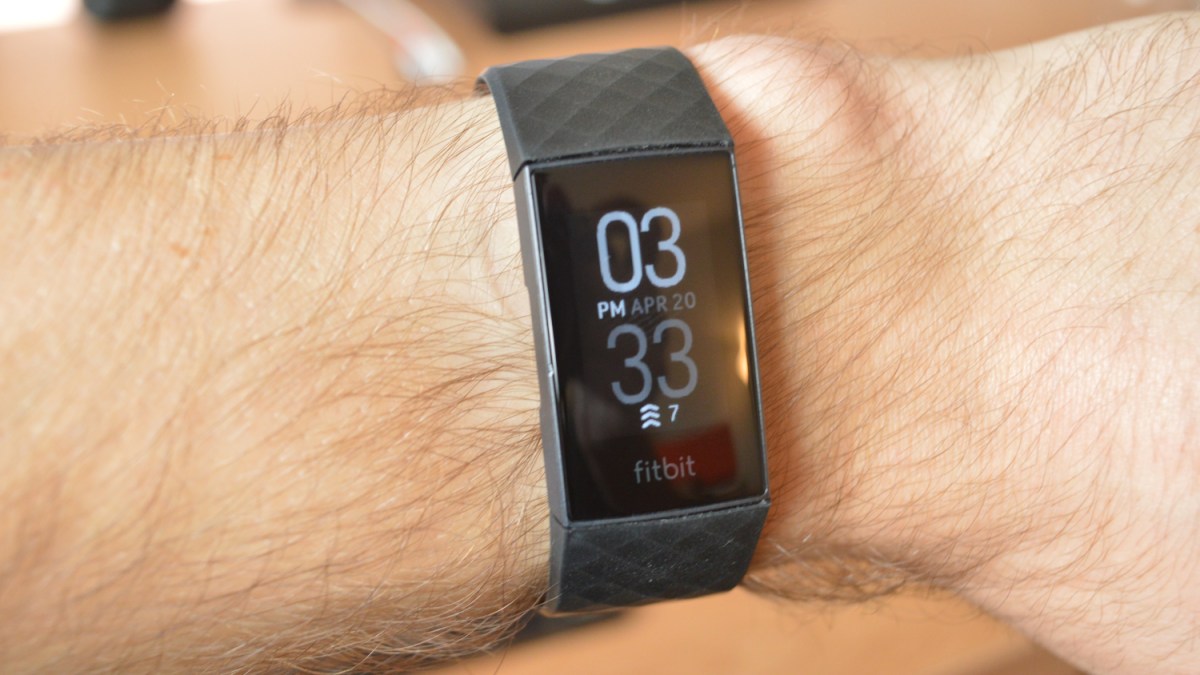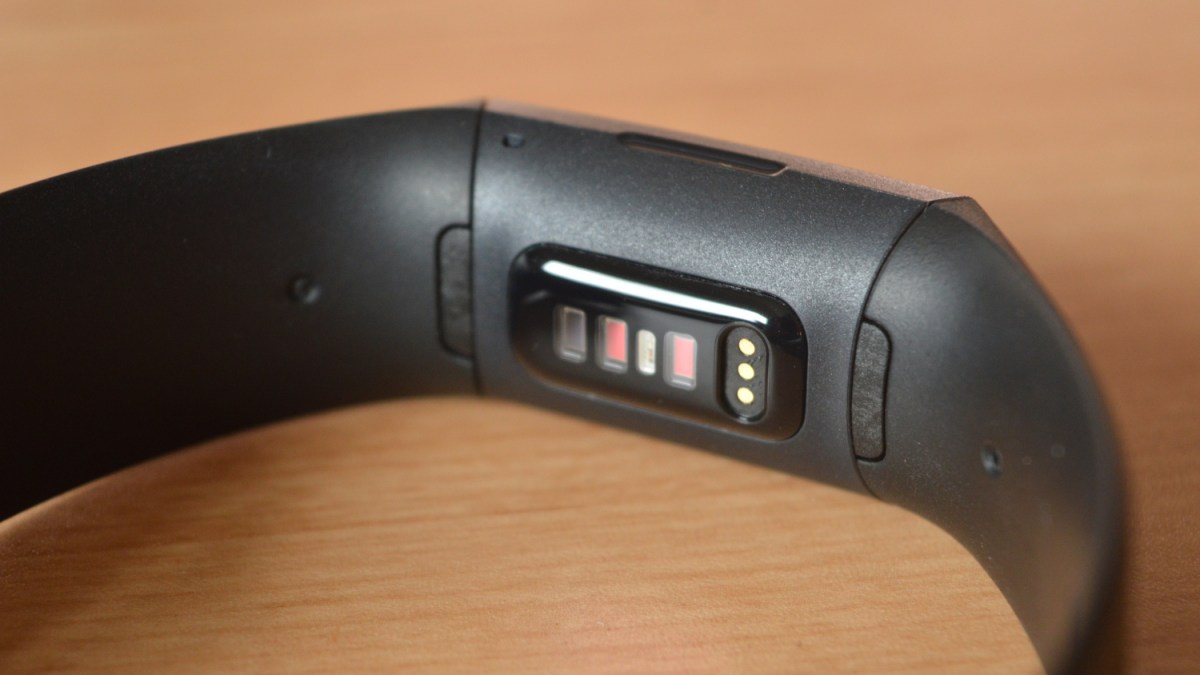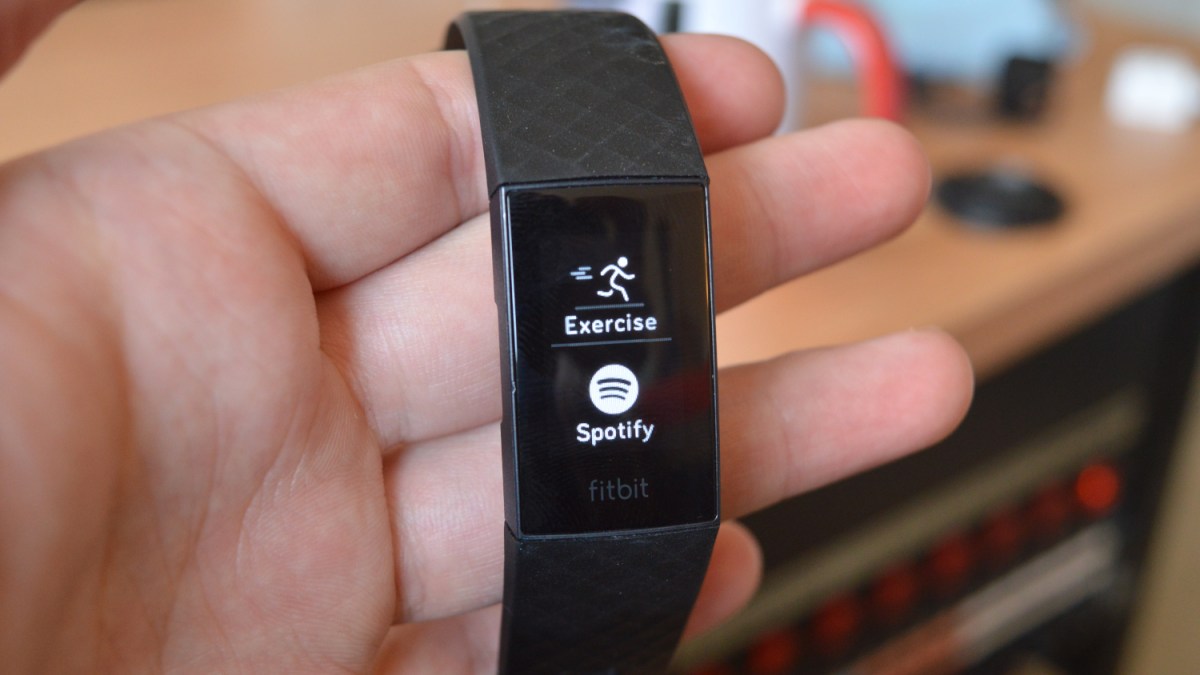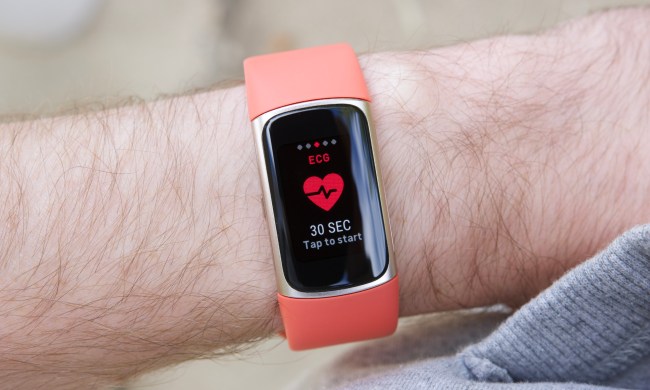- Excellent fitness tracking
- Some smart features
- Good battery life
- GPS built in
- Solid value
- Limited music support
- Slightly dated design
- Display could be better
Tracking my health is important to me. I use MyFitnessPal to track what I eat, Sleeptracker to monitor my sleep, and the Apple Watch to track my fitness and activity. All that information is tied together in the Apple Health app. The Apple Watch even alerted me to the fact that I might have atrial fibrillation — a diagnosis that was later confirmed by cardiologists. In a world with all these ultra-high-tech, artificially intelligent tracking systems, the humble Fitbit can feel a little old-school.
While the Fitbit Charge 4 isn’t going to compete with the Apple Watch in many areas, for the price, it’s pretty much the best fitness tracker you can buy. That’s especially true given that the device now finally offers built-in GPS and new heart-monitoring features.
Let’s take a closer look.
Design
The Fitbit Charge 4 looks almost identical to the Fitbit Charge 3 — and while the Charge 3 did offer an updated design, it does still feel a little dated at this point. That’s not to say that it’s ugly. The device is small enough to look good on wrists of all sizes, plus it’s easily customizable thanks to the huge range of bands out there.
On the front of the device, you’ll find a 1-inch monochrome OLED display with a resolution of 160 x 100 pixels. The display is pretty boring and at times frustrating to use. It’s not always on, and it often doesn’t wake when you raise your wrist. Not only that, it’s not very bright, and can sometimes be difficult to read in sunlight. An updated display would have been appreciated here.

On the side of the Charge 4, there’s a haptic button, which wakes the display and serves as a home button in the device’s software, among other things. It works fine, though sometimes you have to press harder for it to work. You’ll get used to it, though. On the bottom of the device you’ll find the charging pins and a heart rate monitor.
As you would expect from a fitness tracker in 2020, the device is water-resistant to up to 50 meters and supports swim tracking as a result. I wasn’t able to get to a pool to test this due to the ongoing lockdown.
Generally speaking, the overall design of the Fitbit Charge 4 could be described as “fine.” It does the job. It’s not flashy, and the display is a bit lackluster. This isn’t a smartwatch after all — it’s a fitness tracker. And it looks like one.
Tracking fitness
Before you actually start tracking your fitness, it’s worth diving into the app and figuring out which activities you think you’ll use most, as the device only actually holds six shortcuts at a time. I actually thought that the Charge 4 couldn’t track tennis, but it can track a massive range of activities — you just have to specify which ones are most important to you. By default the shortcuts include running, biking, swimming, treadmill, outdoor workout, and walk.
It is a little annoying that only six shortcuts can be included. I wouldn’t characterize myself as the most active person out there, but I still track walks, runs, strength training, and the occasional tennis and swimming sessions. It would be easy to imagine someone needing to use more than six types of activity regularly.

New for the Charge 4 is built-in GPS, which is a very welcome addition. With the GPS, you can finally leave your smartphone at home if you want to physically track your run. I found GPS accuracy to be pretty accurate — and even slightly more accurate than the Apple Watch.
The fact that the device has GPS built into it puts it ahead of the vast majority of other trackers, especially in this price range. Most other GPS-enabled devices are full-on smartwatches, except for the Garmin Vivosport, which trades in other features, like swim tracking and some other fitness metrics.
The workouts that use the GPS track things like pace, speed, distance, time, and heart rate. Other workouts track time, calories burned, and heart rate. It’s a good selection of metrics, and those things can all be easily seen straight from the Fitbit app.
The Charge 4 can automatically track some workouts like running, walking, biking, elliptical, and more. This came in handy more than once. During this time of social distancing, I’m trying to take at least a few walks per day — and I might not remember to start a workout to track those, considering I don’t always think of them as “workouts.” The Fitbit Charge 4 had me covered, as I was pleasantly surprised to see all my walks in the app.
The Fitbit Charge 4 can track your sleep, too. While wearing a device to bed took some getting used to, it tracks a ton of data — and if you get Fitbit Premium, you’ll see how Fitbit breaks down your score. It’s hard to determine how accurate sleep tracking is without a dedicated sleep lab, but the scores did seem to line up with how I felt about my sleep, and with the score I get from Sleeptracker.
While I didn’t test it for obvious reasons, the Charge 4 offers menstrual cycle tracking, and the app lets you log and compare symptoms and moods with other users and previous months. The Charge 4 also helps out with mental health — thanks to the built-in Relax app that helps you conduct breathing exercises.
Not quite a smartwatch
Let’s get this out of the way right now. The Fitbit Charge 4 is not a smartwatch. If you want a smartwatch, you should look elsewhere.
That’s not to say that the Fitbit Charge 4 has no smart features. On the contrary, it can do a number of things that you would expect from a smartwatch. You’ll be able to see many notifications on your wrist, including text messages, calls, and more. The device now supports Fitbit Pay, which makes for easy mobile payments.

Another new feature is the ability to control music playing on your phone from your Charge 4. Unfortunately, the feature is limited to Spotify, and you can’t control music when you’re working out — which makes the feature pretty useless on a fitness tracker. Also, you can’t store music on your device. If you were hoping to leverage the GPS support to leave your phone at home, but still want to listen to music, you’re out of luck.
This essentially completes the Charge 4’s smartwatch-like feature list. It doesn’t have accept to an app store. It can’t record audio. It won’t take calls. It can’t provide GPS navigation. It won’t display local weather. And so on. The lack of these feature isn’t really a flaw with the Charge 4, as its focus on fitness no doubt contributes to the tracker’s reasonable price point.
If you’re looking for a true smartwatch, then it’s worth considering other options. If you’re an Apple user, you could pay only a little extra for an Apple Watch Series 3. While the Apple Watch isn’t quite as in-depth on fitness-tracking, it’s very capable, plus it offers all the other features you would expect from a smartwatch.
The Fitbit app
Tying together all the data that the tracker collects is the app — and it’s a home run. Fitbit has been working on its app for years, and it’s incredibly detailed. The dashboard of the app shows things like the number of steps you’ve taken, the number of floors you’ve climbed, your heart rate, and more. Tap on those metrics, and you’ll be able to see much more detailed information.
For a run, you can see where you ran on a map, along with the “heart zones” you reached on that map, and your pace. Scroll down, and you’ll get a look at your elevation, a breakdown of your heart zones, heart rate information, calories burned, and more.
The app is great at tracking and rewarding goals too. You’ll find all kinds of goals on offer, including weekly and daily goals. “Active Zone Minutes” takes recommendations from the World Health Organization and American Heart Association, and turns those recommendations into minutes of exercise. It can be a little confusing, but the overall gist is that you’ll get more credit toward your goals for more intense workouts, which helps encourage users to push themselves.
You will have to dig into the settings to find some of the features on offer, but once you get used to how the app is laid out, that’s easy to figure out. For example, you can’t just head to the settings menu to tweak the settings of your device, but have to tap through to your device first, and then head to its own settings menu. It does make sense when you think about it, but it can still a little confusing.
Overall, the Fitbit app is awesome. It’s well-designed, and it makes sorting through the huge amount of data that the Fitbit Charge 4 collects easy.
Battery life
The battery life on the Fitbit Charge 4 is rated at up to an impressive week of use — but that will largely depend on how often you use GPS. Fitbit says that with GPS on, you’ll only end up getting five hours of use. In real-world use, you’ll end up getting a few days out of the battery if you use the device to track workouts.
That’s not bad. “Real” smartwatches will only get you a day or two of use, at the most.
While battery life is good, the fact that you may end up using this device to track your sleep means that you’ll actively have to think about when to charge your Charge. For some, it will be in the shower, or when you’re sitting at your desk.
Our Take
The Fitbit Charge 4 is the best fitness tracker out there. It’s distinctly better than the Charge 3, thanks to the built-in GPS, plus the Fitbit app allows those who want to dive into their fitness metrics to do so.
However, the age of fitness trackers is coming to a close. If you’re an Apple user, you could get a new Apple Watch Series 3 for only $50 more, and if you can afford it, an Apple Watch Series 4 or 5 is even better. On the Android side, there are watches like the Samsung Galaxy Watch Active 2.
On the fitness tracker side of things, the only competition comes from devices like the Samsung Galaxy Fit, Huawei Band 4 Pro, and some devices from Garmin — but in each and every case, you’ll either sacrifice GPS, or decent software. The Fitbit Charge 4 is the complete package.
Is there a better alternative?
If you’re looking for a traditional fitness tracker, then the Fitbit Charge 4 is the way to go, and there’s very little in the way of competition. If you want a versatile device that you can use for more than just fitness tracking, then it’s worth considering something like the Apple Watch SE or Apple Watch Series 3.
Want more options? Check out the best fitness trackers for 2020.
How long will it last?
The Fitbit Charge 4 should last at least a few years under normal use. The body is built to withstand some bumps, and it has a water-resistance rating of up to 50 meters.
Should you buy it?
Yes. The Fitbit Charge 4 is a great fitness tracker, and the Fitbit app is a near-perfect companion to it.
On the other hand, you might also be looking for something discounted. We’ve written about the best Fitbit deals and smartwatch deals that you can check out.









